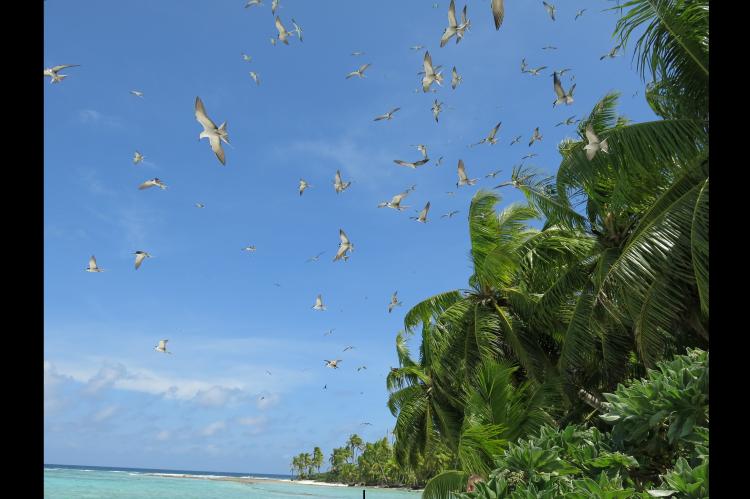Fewer rats means good news for coral reefs
A new study has identified how controlling invasive rat populations can help protect coral reefs.
At first glance, it would appear that seabirds and invasive rats on tropical islands have little to do with coral reefs.
Perhaps not directly, but if we trace the links that can exist among the three groups of animals, the relationship becomes more obvious, according to a new study.
"Seabirds are crucial to these kinds of islands because they are able to fly to highly productive areas of open ocean to feed. They then return to their island homes where they roost and breed, depositing guano—or bird droppings—on the soil. This guano is rich in the nutrients, nitrogen and phosphorus," said lead author Professor Nick Garham from Lancaster University.
However, the presence of invasive rats can have a debilitating effect on the seabird population on tropical islands, as they prey on the seabird's eggs and chicks. With fewer seabirds on the island, there would be less guano in the soil, and subsequently less nutrients making their way into the sea.
The study (published in a recent issue of the Nature journal) focussed on the Chagos Islands in the central Indian Ocean, which comprises a combination of rat-free and rat-infested islands. The latter set of islands were infested with black rats believed to have been introduced in the late 1700s and early 1800s.
According to the press release from ARC Centre of Excellence for Coral Reef Studies (Coral CoE) at James Cook University, "Rat-free islands had significantly more seabird life and nitrogen in their soils, and this increased nitrogen made its way into the sea, benefiting macroalgae, filter-feeding sponges, turf algae, and fish on adjacent coral reefs." In fact, the nitrogen input by seabirds per hectare of island was 251 times higher on the rat-free islands.
As for the fish population adjacent to the rat-free islands, it was comparatively more abundant and grew faster, with the mass of fish estimated to be 50 percent higher. In addition, algae grazing (in which fish consume algae and dead coral) was 3.2 times higher at sites adjacent to rat-free islands.
The findings prompted co-author Dr Andrew Hoey from Coral CoE to conclude that the results "not only show the dramatic effect that rats can have on the composition of biological communities, but also on the way these vulnerable ecosystems function [or operate]."
"Getting rid of the rats would be likely to benefit terrestrial ecosystems and enhance coral reef productivity and functioning by restoring seabird derived nutrient subsidies from large areas of ocean. It could tip the balance for the future survival of these reefs and their ecosystems,” added Graham.


